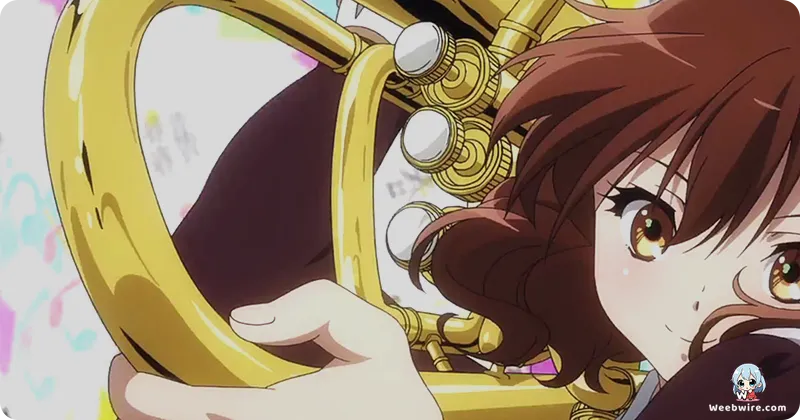Kyoto Animation's 'Sound! Euphonium': A Deep Dive into the Unseen Artistry Behind the Music

Kyoto Animation's acclaimed series, Sound! Euphonium, has resonated deeply with global audiences, not merely for its breathtaking animation and soul-stirring musical performances, but for its profound commitment to realism and a sensitive exploration of human connections. While numerous anime narratives revolve around high school club activities, Sound! Euphonium elevates the genre, plunging into the intricate, high-stakes world of a competitive concert band. It unveils layers of meticulous detail and captivating trivia, offering insights that even devoted fans might discover anew, cementing its status as a series that richly rewards close observation.
Unparalleled Authenticity in Visuals and Sound
A cornerstone of Sound! Euphonium's unparalleled appeal lies in Kyoto Animation's almost unparalleled dedication to visual and auditory authenticity. Departing from common anime practices where instruments are often simplified or animated with generic motions, the series meticulously reconstructs the very act of playing. Animators reportedly collaborated closely with professional musicians, undertaking extensive studies of precise finger placements, embouchure techniques, and the subtle breathing control essential for each instrument. This exacting commitment extends to the instruments themselves, depicted with remarkable fidelity, frequently modeled after specific real-world counterparts. For instance, Kumiko Oumae’s euphonium is far from a generic brass piece; its distinct design, the nuanced way light gleams off its valves, and its unique tonal qualities are all deliberately rendered. This wasn't solely for aesthetic brilliance; it was fundamentally crucial for authentically conveying the characters' struggles and triumphs, imbuing their musical odysseys with a genuine sense of earned accomplishment and profound believability.
Beyond the visual portrayal of instruments, the series’ sound design stands as an equally monumental achievement. Sound! Euphonium incorporates actual recordings from full concert bands, guaranteeing that the sonic performances are as authentic as their visual counterparts. The discernible evolution of the band's collective sound transitioning from tentative, uncoordinated early rehearsals to polished, emotionally charged competition renditions functions as a compelling character arc in itself. Viewers can genuinely perceive the improvements, adding an immersive dimension that makes the ensemble's ultimate successes profoundly impactful. This unwavering pursuit of sonic realism underscores the production team's deep respect for the realm of classical music and the unwavering dedication of young aspiring musicians.
Depth of Character and Relationships
The depth of character development within Sound! Euphonium provides yet another rich vein of fascinating insights. Kumiko Oumae, the central protagonist, defies the archetypal anime heroine. Her initial detachment towards music, her introspective reflections, and her often-candid observations make her exceptionally relatable. A less-highlighted facet is how her internal conflicts, particularly her hesitance to fully embrace commitment, are subtly mirrored by her instrument choice the euphonium, an often-overlooked yet vital component of a band’s harmonic foundation. Her personal odyssey is not one of sudden, dramatic metamorphosis, but rather a gradual, occasionally arduous evolution, sparked by minor interactions and profound personal realizations. This commitment to realistic character progression is a defining characteristic of the series, setting it apart from more idealized portrayals of adolescence.
The intricate tapestry of relationships between the characters also remains a continuous source of fascination. The dynamic between Kumiko and Reina Kousaka, for example, exemplifies nuanced narrative mastery. Their bond transcends simple categorization, evolving from mutual curiosity into a deep, unspoken understanding that hints at romance while retaining an ambiguity that resonates broadly. The series masterfully employs visual storytelling, showing rather than telling, the complexities of their connection through subtle glances, shared moments, and unarticulated emotions. Similarly, figures like Asuka Tanaka, the enigmatic third-year euphonium player, initially appear aloof but are progressively revealed to possess deeply intricate motivations and personal struggles, enriching the narrative with layers of dramatic tension and emotional profundity.

Uji, Kyoto: A Setting Brought to Life
Furthermore, the anime's meticulously rendered setting in Uji, Kyoto, transcends a mere backdrop; it emerges as a character in its own right. Many locations depicted within the series are direct recreations of real-world sites, ranging from the historic Uji Bridge to local train stations and verdant parks. This scrupulous attention to geographic detail has cultivated a cultural phenomenon known as 'anime pilgrimage,' where fans embark on journeys to these real-life locales to immerse themselves directly in the world of Sound! Euphonium. The seamless integration of these familiar, everyday settings anchors the anime’s often fantastical elements in a tangible reality, rendering the characters’ ordinary lives and their extraordinary musical pursuits all the more authentic and accessible to its global audience.
The Creative Foundation
The foundational blueprint for this rich universe was originally laid by Ayano Takeda’s light novel series, brought to life by Nikki Asada’s illustrations. The anime adaptation, particularly under the visionary direction of talents such as Tatsuya Ishihara and Naoko Yamada (who also helmed the acclaimed spin-off film, Liz and the Blue Bird), expanded upon this foundation with visual storytelling techniques unmistakably characteristic of Kyoto Animation. Yamada, notably, is celebrated for her highly expressive character animation and her evocative use of cinematography to communicate internal states, a prowess brilliantly showcased throughout the series. The subtle visual cues like reflections dancing in windows or the precise framing of a character’s hands frequently convey as much, if not more, emotional weight than dialogue itself.
In essence, Sound! Euphonium stands as a powerful testament to the impact of meticulous detail and authentic narrative craft. It is an anime that transcends superficial entertainment, offering a profound contemplation on the world of music, the inherent challenges of youth, and the enduring beauty of human connection. Its lasting legacy is meticulously woven from these 'good to know' facts the unwavering dedication to instrumental accuracy, the nuanced depths of character psychology, the realistic environmental setting, and the masterful animation all synergistically combining to forge an experience that continues to deeply resonate with admirers across the globe, years after its initial premiere.
Credits
Sound! Euphonium
Author
Ayano Takeda
Cover Art
Nikki Asada
Studio
Kyoto Animation
Publisher
Takarajimasha
Producers





